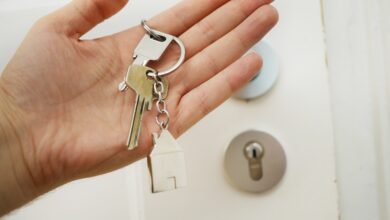Workplace foot and ankle injuries do much more damage than people realize. In fact, the most recent data from 2018 showed that over 96,000 foot and ankle injuries caused people to miss multiple workdays.
The most common workplace foot injuries include sprains, strains, and fractures. Wearing appropriate safety boots is one of the best ways to avoid injuries. But how do you know what to look for when buying workplace safety boots?
The good news is simply learning a few tips will make the process quick and easy.
Keep reading this guide to learn seven tips for choosing the best safety boots for your job.
1. Check for the Right Comfort and Fit
Remember, you’re spending over eight hours a day on your feet, working hard to do your job. The last thing you need is uncomfortable work boots. Maximizing shoe comfort not only improves job performance but keeps you safer.
This is because you’ll be more steady overall when you wear shoes that fit correctly and are comfortable to walk in.
So, pay close attention to how your work shoes fit overall. Be on the lookout for pinching or material that doesn’t give your feet the room they need to move. Steel-toe boots are known to cause discomfort, but this is because people often buy boots that are too narrow or loose.
Take your time to ensure the fit is right the first time so you don’t end up with boots that are too uncomfortable to wear.
Work boots made from leather are usually the most flexible since they conform to the shape of your feet over time.
2. Don’t Compromise on Safety Features
Safety is the most critical component of work shoes, so this isn’t something you can compromise on.
The first thing you need to do is check with your employer about the requirements for safety shoes. Some jobs require composite toe boots made from kevlar, plastic, or carbon fiber. They’re suitable for people working outdoors, like in forestry and law enforcement occupations.
Composite toe boots are also best for anyone with work sites that use metal detectors since they don’t have metal.
Steel-toe boots are best for construction, disaster relief, or farming jobs.
Once you understand your work’s PPE requirements, you must research to find reputable safety stores near you. You can also find quality PPE online.
3. Ensure You Have Enough Support
While you need comfortable protective shoes, you must also check that they provide enough support.
Be sure to look closely at the insole of the shoes. It’s best to have insoles that pad and raise your heel to protect it from external pressure. You may find some boots that have a deep-heel feature. This feature works well as long as you have enough cushioning between the ground and your heel.
It’s also essential that the boots you choose have a sturdy outsole that gives you enough support when you walk. Any shoes that fit right but cause blisters or sore arches usually have support issues.
If you can’t find a quality insole that you can use, it’s best to upgrade your boots.
4. Check for Good Traction
Having good traction is crucial to your safety, so you must pay close attention to this when looking for safe workplace shoes to buy. Slips and falls are one of the biggest workplace hazards, which can be avoided if you wear shoes with proper traction.
First, you should look for boots that give you a solid grip on any surface. For example, rubber outsoles are a great option if you work outside. They give you the grip you need while walking on rugged terrain and make it easier to grip onto ladders.
You’ll need thermoplastic polyurethane (TPU) outsoles for maximum traction if you work around chemicals or in the oil industry. TPU soles can mold to any area you walk on. They also have good resistance against various oils and chemicals.
Finally, TPU soles are more heat-resistant and lightweight. Safety boots with these soles are much more comfortable and well worth the investment.
5. Look For Waterproofing and Insulation
Walking around with wet boots doesn’t make for a fun day. Not only does it lead to frozen toes during the winter, but it creates a breeding ground for bacteria.
The truth is bacteria like E. coli are already commonly found on most shoes. This bacteria gets transferred to the floors where you walk around, including your home.
Since bacteria thrive in moist and humid conditions, choosing shoes that don’t have waterproofing makes this worse.
In addition to waterproofing, you must ensure your boots have the proper insulation to make working outdoors in extreme temperatures bearable. This is especially true if you live in a cold and snowy region.
Although saving money on cheaper workboots might be tempting, you can’t compromise your safety by skimping on insulation.
6. Avoid Buying Second-Hand Boots
There is no compromising on this rule, even if you’re trying to stick to a budget. You should never buy second-hand safety boots for a few reasons.
First, you don’t know what accidents or injuries the boots have been in. Remember, safety boots protect a person’s feet constantly. All of these little things add up, causing significant wear and tear.
Additionally, the second-hand boots you buy could be deemed unsafe at a previous job.
You also have to consider that people walk differently, so second-hand shoes wear out differently. This includes the soles and tread. Wearing someone else’s work shoes could cause damage to your joints and body.
7. Watch for Cheap Prices
Finally, be weary of the overall price point. While it’s fantastic to get a bargain, there is a reason certain safety footwear is so cheap.
For example, if you’re buying safety boots at a local supermarket store, they may not undergo the vigorous testing other well-known safety brands do.
Do your research to ensure you’re buying reputable brands that follow safety protocols. Online reviews give you a good indication of how past and present customers feel about the quality overall.
Checking with the Better Business Bureau (BBB) will give you access to reviews, ratings, and complaints.
Look for safety symbols that indicate the level of protection the boot provides. In the US, you’ll see symbols like an R that tell you which organization did the testing.
Also, green triangles symbolize the boot’s toe is good for heavy industries like construction.
Choosing the Right Safety Boots for Work
Following these tips will help you choose the right safety boots for your job. Remember not to rush the process and take the time to find boots that offer you a safe and comfortable fit.
Never forget that your feet do a lot of work, and you need the right safety boots to stay as healthy as possible.
Be sure to check out the rest of our blog for other helpful health and lifestyle tips!




